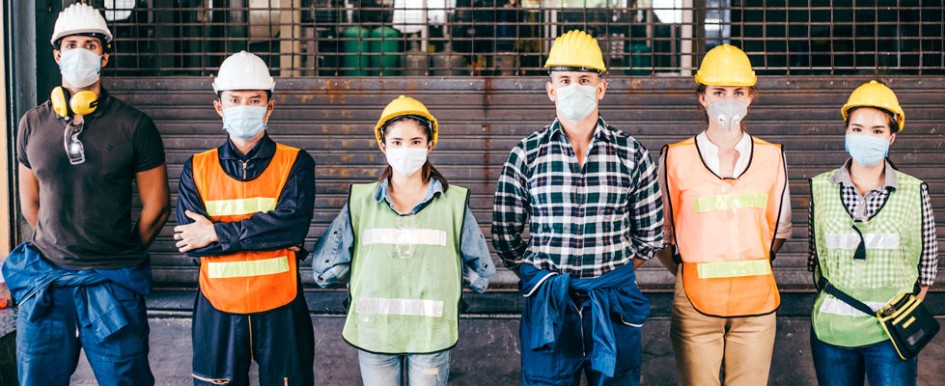
With an uneven pandemic response across the country and a number of regulations that fluctuate from week to week, the commercial construction industry dealt with an intense degree of uncertainty in 2020.
But there is cause for optimism in 2021. A McKinsey report showcases a 28% performance boost for the most proactive companies over the course of the last economic recovery from 2007 to 2011.
According to the same McKinsey report, the construction industry represents 13% of global gross domestic product, and unlocking currently constrained labor availability could help drive recovery while addressing the most pressing construction-related needs.
Players are looking to consolidate to establish economies of scale and support investment in talent, among other things. With a rising project backlog, a consistently declining industry unemployment rate and a positive growth trajectory for 2021, recovery is indeed underway.
Many projects are expected to commence at the same time, which will result in tight resources due to everyone competing for the same talent. It’s time to start thinking about how to prepare for a busy new year. To understand how staffing fits into this industry outlook for your firm, the following are four staffing methods to grow your labor pool and stay prepared for all the opportunities 2021 will bring, while still managing overhead costs.
1. Broaden Your Applicant Pool
With the pool of available talent larger than it has been in recent history, your firm should—in theory—be able to find people and finish each job fairly easily. But, of course, it’s not that simple. Expanding your candidate pool can create flexibility and help you build a stronger team while staffing for future projects. With many considering a new career path, it’s a good time to attract workers from different industries with transferrable skills.
Any time you add a filter to your job descriptions, it shrinks your candidate base and makes it harder to find a candidate. Therefore, expanding your qualifications makes it easier to retrofit the work to the available talent.
2. Fine-Tune Your Job Opportunity
Understanding your pipeline to build greater confidence in a project’s success is also about providing a competitive job opportunity. Think of what you can offer incoming contractors that will make your construction projects more attractive. Companies with numerous opportunities for training and advancement on the job will have an easier time bringing in motivated new talent.
Also think about how you can align resources for future projects while controlling costs through the end of this year. Consider hiring through making contingent offers to future employees or teaming up with an industry-aligned staffing company. They can help onboard talent proactively on a contract basis prior to project kickoff. Taking the time now to refine your job opportunity and attract both new and existing talent groups with it can put you ahead of your competition.
3. Reevaluate Your Project Timelines Based on Staffing Needs
Most construction firms face an uphill battle to deliver planned work on schedule. Timing is important, with contractor delays having a cascading effect across projects, and individual skilled workers with necessary licenses differing in mentality, with family situations and in the ability to work or not during COVID-19.
Knowing the details of each individual employee’s status is an important way to gauge availability. A lot of people don’t feel comfortable coming back to work. Knowing the reasons behind that discomfort, such as a compromised family member or particular safety concern, can help you understand how the labor pool is evolving. And by unearthing these concerns now, you can create both realistic timelines for future projects and better working conditions for employees.
4. Leverage Safety Protocols as a Recruiting Advantage
Contractors and subcontractors talk. Right now, they’re talking about where it is safe to work, who’s taking care of their workers and who’s not. Ensuring workers feel safe is more than just providing the appropriate personal protective equipment (PPE).
Start by instituting a solid health and safety plan and follow up by promoting it to all workers. And if possible, provide additional PPE to help prevent the spread of COVID-19, including face shields, masks, gloves and hand sanitizer. A strong health and safety plan should not be overlooked as a component to your employee benefits, and going the extra mile makes a big difference.
Emphasizing workplace safety and COVID-19 protocol is a small investment to make to secure the services of essential contractors and subcontractors, whose patience and flexibility are highly valued in an era of elastic scheduling on planned work. Your staffing partners can help to accomplish this by providing PPE to contractors, so they don’t have to scramble to their local grocery store, and by consulting and providing other important health and safety precautions.
While project delays, public fund reallocations, and sector-to-sector variance have made completing commercial construction projects into a game of whack-a-mole, the industry’s recovery from coronavirus will be a long-term project. With an imminent, busy first quarter, it is necessary to determine your hiring strategy and plan for your workforce now to access the best talent and deliver on your future construction projects. What you do now for your workforce can have an outsized impact on your construction firm’s future position.
